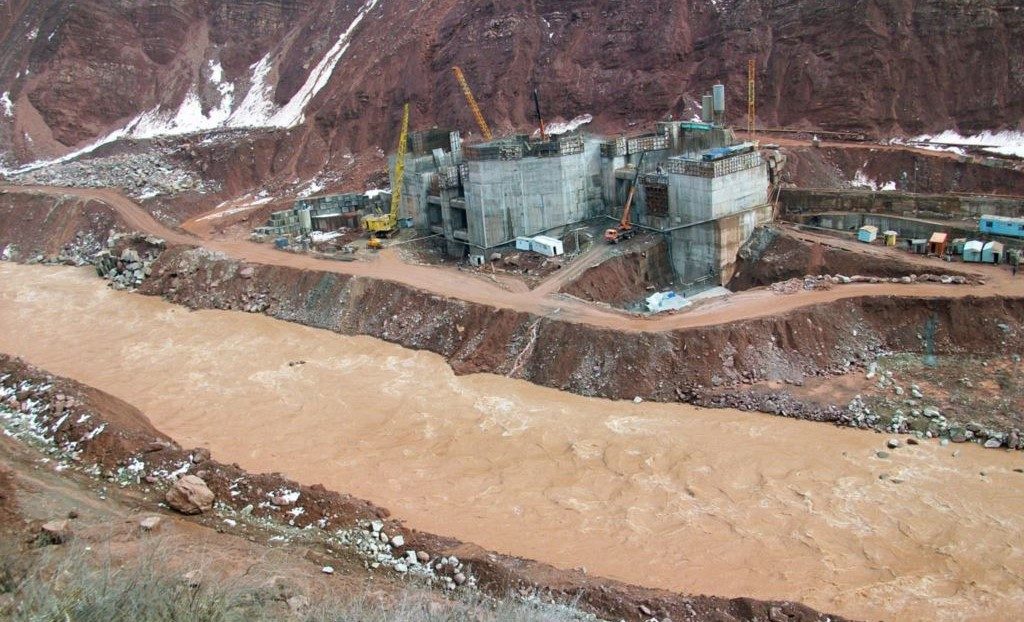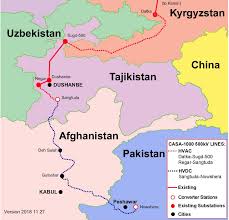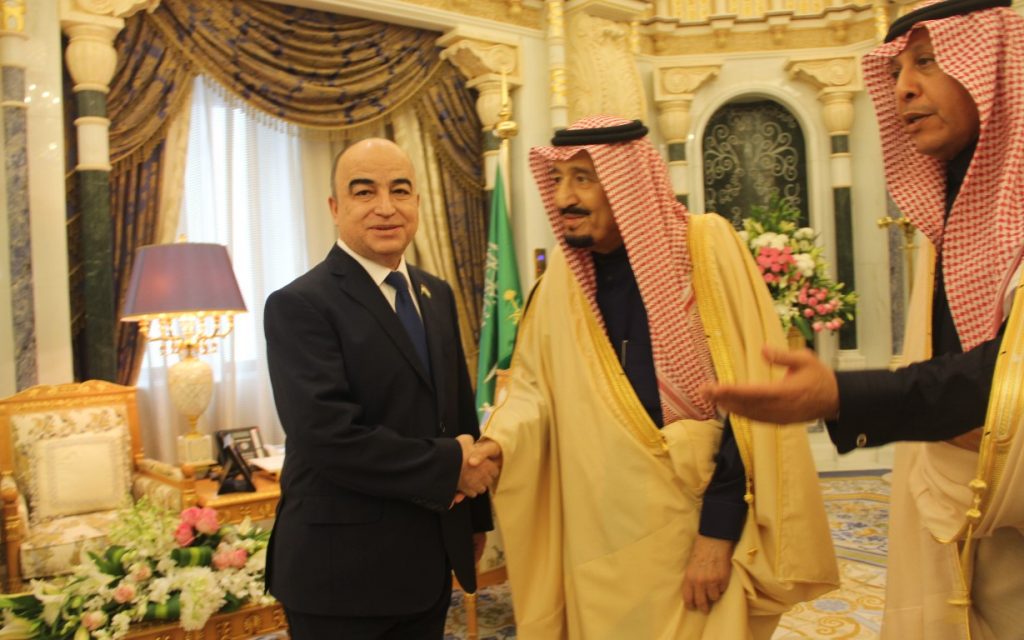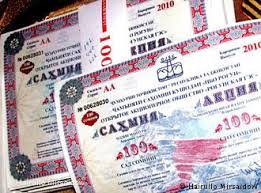“The authorities have to realize that “political investments” do not work anymore. For geopolitical games, there is not enough money. Especially, for such an ambitious project as the Rogun HPP. An investor (external or internal) can only be interested with profits now”, Marat Mamadshoev, an analyst from Dushanbe, states in his material for CABAR.asia.
Follow us on LinkedIn

For a decade and a half, Tajik officials have failed to find sources of funding to complete the Rogun hydropower plant construction. Nobody was seriously engaged in finding investors, while numerous messages on this issue were only a handwaving.
First, a few words about the significance of the Rogun project for the Tajik elite.
The project of HPP construction for the authorities of Tajikistan is more than just a regular project. It has important economic, social (including propaganda) and political (geopolitical) components.
Region Electrification and Currency
The Rogun HPP, after the full launch, will annually produce 13.1 billion kilowatt-hours of electricity. This volume will be enough to cover the internal deficits and to export the electricity to Pakistan and Afghanistan. The payback period is 10 years.

One has to note that without the Rogun HPP completion, the largest regional project CASA-1000 would be meaningless.
Obviously, the ruling elite of Tajikistan expects to provide a stable source of currency by exporting the Rogun electricity.
Another part of the funds will be spent on stabilizing the situation in the energy and other sectors and to cover the budget deficit.
It should be noted that many sectors of Tajikistan’s economy, which in many respects has been working with Soviet resources (equipment, technology, personnel), have practically collapsed recently.
Almost no large state-owned enterprises, including the flagship of the industry, the Tajik aluminum plant, are even able to pay taxes.
At the same time, even if the HPP construction is successfully completed, there are commercial risks. Countries that are potential consumers of Rogun electricity, to put it mildly, are not rich. In addition, there is an ongoing warfare in Afghanistan and there is no complete clarity that Rogun electricity is fully demanded. In Uzbekistan, there are plans to build a nuclear power plant, which in any case will reduce the shortage of electricity in the region.
Rogun’s Propaganda Role
The President Emomali Rahmon’s personal involvement in the ceremony of closing the channel of the Vakhsh river on October 29, 2016, shows the role of the hydropower plant in the propaganda structure of the power.
As it is known, President Rahmon personally handled the bulldozer, filled the river bed with tons of earth and stones and was the first to go to the far bank.
Residents of the country, especially the regions, expect that Rogun will provide them with cheap electricity all year round. In 2010, the authorities even managed by voluntary and coercive measures to collect from the population about $65 million for the HPP construction.
During the 2010 campaign, the authorities spoke of Rogun as a national project and demanded the consolidation of society. Sukhrob Sharipov, back then director of the Center for Strategic Studies under the country’s President, at an international conference said that the construction of hydropower plants in Tajikistan and Kyrgyzstan is becoming a national idea and critics of these projects can be compared with the enemies of the nation.
The authorities expect that the Rogun’s launch will strengthen further its influence in society and stop criticism.
Rogun’s Geopolitical Role
The launch of the Rogun HPP will also strengthen Tajikistan’s position in the region. Earlier, during various conflicts with neighbors (primarily with Uzbekistan, Kyrgyzstan, Turkmenistan, indirectly with Kazakhstan), Tajikistan’s ruling elite pityingly discovered that it had almost no levers of influence on its neighbors. At the same time, both Uzbekistan and Kyrgyzstan successfully used the impasse of Tajikistan, blocking the fuel and lubricants supply (primarly, this business belongs to the most influential families in Tajikistan).
Recently, this policy was continued by Turkmenistan, which blocks transport with cargoes for Tajikistan on the border with Iran with impunity.
China’s plans for the construction of various transportation hubs (the China-Kazakhstan-Turkmenistan-Iran railway or another option, in the southern Kyrgyzstan from Irkeshtam to the Andijan region of Uzbekistan) further reinforce the impasse of the Republic of Tajikistan.
In addition, Tajikistan can influence on Kyrgyzstan by the CASA-1000 project, in which both countries will export electricity to Afghanistan and Pakistan.
Is There Any Way Without a Foreign Investor?
According to the latest data of the Government of the Republic of Tajikistan, about $3.9 billion are needed to complete the Rogun HPP construction.
As President Emomali Rahmon stated in his address to the parliament at the end of December last year, 24 billion somoni from all sources of financing were used (at the time when the article was published, more than $2.54 billion). More than 2.1 billion somoni or about $222 million allocated from the state budget this year should be added to this figure. In any case, it turns out that at least another $1 billion will be required to complete the construction.
During the fundraising campaign for Rogun, Rahmon, speaking publicly on television, said that he could very quickly raise the necessary funds for the HPP construction from foreign investors by putting Rogun shares on international exchanges.
But according to Rahmon, he did not want to do this, since in this case the hydropower plant would fall under the foreign influence, which would dictate a policy “contradictory to the interests of the people”.
It is quite possible that the Tajik economic elite, which is closely connected with the political elite, personally has the funds necessary to complete the construction right now. But it’s unrealistic to expect Tajik oligarchs who avoid long-term projects to invest in Rogun HPP.
These people expect that the Rogun project will enrich them further. They do not intend to invest their funds in it.
It follows that in order to complete the HPP construction, it is necessary to find an acceptable foreign investor.

The World Bank has recommended four financing schemes for the Rogun project: self-financing, a concessional loan from a friendly state, a loan from international financial institutions (IFIs) and a bond issue.
The first recommendation of the World Bank abolishes immediately: an attempt to extort the money from the deprived population may even lead to a social ‘explosion’. And the rich, as we said earlier, are not going to invest in the project.
Masud Sobirov, the Tajik economist, in an interview with CABAR.asia has already expressed doubts that Tajikistan will be able to complete the construction with its own funds.
Also, the idea of raising funds through issuing government bonds and selling them on international financial markets seems unrealistic.
Their sales are very limited due to the economic indicators of Tajikistan. Given nontransparent power, there are doubts even about the reliability of the Ministry of Finance’s information on the sale of bonds for $500 million.
Thus, only two options remain: loans from the IFIs or from a “friendly state”.
And speaking of the IFIs, in the first place, candidature of the World Bank itself was suggested to become an investor.
Is the World Bank the First Fake Investor?
It is not completely clear if the Tajik authorities seriously considered the World Bank a potential investor. Although initially, there were big doubts that the bank would invest and be able to successfully implement such a large-scale project.
Perhaps, these hopes were related to the fact that the World Bank hired experts who conducted an environmental impact assessment of the Rogun project, which gave a favorable result for Dushanbe. Although, in the project feasibility study, it was noted that the bank itself would not invest in HPP.

Moreover, the World Bank’s regional director for Central Asia, Saroj Kumar Jha, in March 2013 stressed on the bank’s website that the World Bank did not undertake any obligations in Rogun HPP construction.
It is possible that at some point the bank management could give hopes for participation. Then, the bank did not invest in an expensive project, not having received adequate guarantees from the authorities of Tajikistan. Perhaps, the bank was afraid of possible failure and reputational costs.
However, there might exist another version: the Tajik government negotiated with the World Bank to apply pressure on other potential investors (Iran, Russia, etc.) to demonstrate to the latter that it has other, relevant to West, alternatives.
It is also possible that the Tajik power engineers conducted these fake negotiations only to imitate useful activity, in order to satisfy the Head of state and to some extent, the public. By that, they showed that the work on Rogun is on, they are looking for money.
For Tajikistan, where all authorities’ decisions are made taking into account the opinion of just one person, such a scenario is quite likely.
However, in late June last year, Cyril Muller, World Bank’s Vice President for Europe and Central Asia confirmed that the bank will not finance the Rogun HPP at a conference in Dushanbe. Instead, it will focus on upgrading another major hydropower plant, Nurek HPP.
“The reason why we do not finance Rogun construction is because the government had a number of options for what to do with this hydropower plant, and they wanted to speed up the process, but we decided that the World Bank would be more useful in supporting other investments in the energy sector”, Muller said.
However, in early April of this year, the authorities of Tajikistan asked the World Bank to assist in attracting foreign investment for the Rogun HPP project.
Tajikistan’s appeals to other international financial institutions also did not produce any results.
Putin and RUSAL Failed to Conquer the Rogun Dam
At first glance, against the background of other proposals, the scenario of obtaining a soft loan from a friendly state seems to be the most realistic.
However, the Rogun hydropower plant already had such an investor. Before the World Bank, RUSAL attempted to build a hydropower plant; Russian President Vladimir Putin himself was behind the attempt.

An agreement on long-term cooperation between the Government of Tajikistan and JSC “Russkiy alyuminiy” was signed during the visit of President Putin to Dushanbe in October 2004. According to the agreements of the two presidents, RUSAL intended to invest $2.2 billion in the completion of the Rogun hydropower station and the construction of new aluminum facilities in Tajikistan.
However, after three years, in August 2007, the government of Tajikistan canceled the agreement with RUSAL. Formally, the parties allegedly failed to agree on the height and power of the dam.
But unofficially it was said that RUSAL, allegedly under Uzbekistan’s influence, offered a height of 285 meters, while Tajikistan insisted on 335.
Then it was said that RUSAL was disappointed with Tajikistan’s refusal to sell the aluminum plant, and the Russian company turned against the Rogun project.
RUSAL was forced out of the country, and a long judicial war began between the former partners. As a result, all Russian company’s property in Tajikistan was confiscated.

In any case, the Kremlin failed to defend the interests of its company in Tajikistan. Thus, Russia actually dropped out of the list of potential investors of the Rogun hydropower plant.
It should be noted that Russia managed to successfully build the Sangtuda-1 HPP. However, from an economic point of view, it is difficult to label this project successful for Russian investors. The Tajik energy company Barki Tojik systematically does not pay for electricity and the overdue sum for the first quarter of 2019 was 1.17 billion somoni ($124 million).
The problem of the Barki Tojik’s debt on electricity payments to the Sangtuda-1 HPP has repeatedly become a topic of the Russian-Tajik negotiations at the interstate level. It is possible that Dushanbe expects that the Russian side at some point will simply write off this debt.
Also, there is no point to search for Rogun investors in Tehran. Iran itself is experiencing difficult financial problems and is unlikely to be able to afford such huge expenses.
Saudi Myth
After the deterioration of relations with Iran in early 2014, Tajikistan, in contrast, began to demonstratively develop cooperation with Saudi Arabia. In January 2017, Speaker of the Parliament Shukurjon Zukhurov even appealed to Riyadh to invest in Rogun.

However, it seems that the same theses are applicable to the Saudis as to other dubious investors. Competent people in Dushanbe surely understand that a state that itself is experiencing financial difficulties will hardly invest in this project.
Certainly, Saudi Arabia is generally interested in strengthening its influence in Tajikistan, only to minimize the Iranian presence in the country.
For example, as early as the beginning of the 2010s, the WikiLeaks website published a correspondence of Saudi diplomats in Dushanbe, who discussed the growing influence of Iran in Tajikistan and the intensification of Salafi propaganda.
Riyadh certainly needs Dushanbe, at least as an additional support voice in international organizations. However, not at the cost of participation in the billionth project.
On the other hand, Dushanbe independently began to invalidate the Iranian influence in the country. As they say in France, why pay for a service that has already been provided?
For 10 years of cooperation (2007-2017), Saudis invested only $160.2 million in Tajikistan’s economy. This entire amount falls on loans attracted by Tajik enterprises and organizations.
Again, Riyadh estimated the potential of Tajikistan and decided that it would be better not to get involved in Rogun dilemma.
However, there is another issue. It is possible that the official Dushanbe itself did not really wish the Saudis to get involved in Rogun. Saudi Arabia is a strategic partner of the United States, and therefore a potential opponent of Russia. Of course, the Tajik elite is ready to conflict with Moscow on some issues, including quite sensitive ones.
Nevertheless, Dushanbe is barely ready to allow the US strategic partner to participate in its strategic construction. And besides, there is Syria example, where the forces supported by Riyadh opposed the regime of Bashar al-Assad with arms in hand. Such an investor may, under some circumstances, become the notorious Trojan horse.
Thus, due to a number of factors, Saudi Arabia was also a fake investor for Rogun construction.
Rogun as a Mean for Enrichment and Handwaving
For the last few years, Tajikistan still had certain sources that could have been used for the Rogun HPP construction. Work on the HPP seemed to be progressing. Thus, for a long time, the search for investors more resembled an imitation of activities without an obvious prospect.
The situation at the construction site is shrouded in mystery. It was possible to understand that things are not going the best way indirectly.
Rogun project is clearly experiencing financial problems. And it can be predicted that by the fall of this year the problem of funds shortage will be aggravated.
More or less positive experience (according to the reports of the Ministry of Finance of the Republic of Tajikistan) was the practice of placing Eurobonds. However, in the structure of funds spent on construction, this figure is only 20% (one fifth).
Most of the money for construction had to be allocated from the budget, in the conditions when wages, pensions and other indicators of Tajikistan are the lowest in the region and in the entire CIS.

Some of the investment was collected by force, at the expense of the poor population, and aggravated its problems.
The funds collected from the population for Rogun in 2010 were at Tajik banks’ disposal. Note that Rajabali Odinaev, the owner of the company “Umed – 88”, received a loan from the money intended for the Rogun hydropower plant, for which he was lately sentenced.
That is, part of the elite, having access to the Rogun project funds, tried to solve personal problems at the expense of this nationwide project.
In the contradiction between public and private interests, there is a major problem of investors search. The Tajik elite wants to receive funds, but does not want to report on their implementation. As the experience of Sangtuda-1 HPP shows, they do not want to pay the investor after the project is implemented.
Now in Dushanbe there is no clear strategy on where and how to find sources of financing for hydropower plant. Someone may be looking to raise funds according to the old scheme: to take money from some influential geopolitical players, and then, playing on the contradictions between the powers, not to return the received funds.
But this policy seems to have exhausted itself. Dushanbe’s ability to conduct geopolitical intrigues is limited due to the country’s weak potential. With the activation of the new Uzbekistan’s leadership in the regional stage, Tajikistan’s role in the region will decline.
The authorities have to realize that “political investments” do not work anymore. For geopolitical games, there is not enough money. Especially, for such an ambitious project as the Rogun HPP.
An investor (external or internal) can only be interested with profits now. For this, it is necessary to change the status of construction and to conduct a conversation with potential investors on an equal footing.
Another appeal to the World Bank shows that there is still no such understanding.
This article was prepared as part of the Giving Voice, Driving Change – from the Borderland to the Steppes Project implemented with the financial support of the Foreign Ministry of Norway. The opinions expressed in the article do not reflect the position of the editorial or donor.
This article was prepared as part of the Giving Voice, Driving Change – from the Borderland to the Steppes Project implemented with the financial support of the Foreign Ministry of Norway. The opinions expressed in the article do not reflect the position of the editorial or donor.

